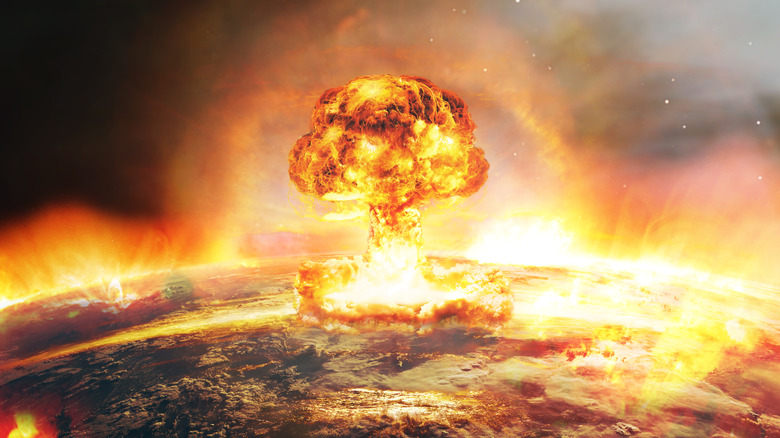How Some Manhattan Project Scientists Attempted To Prevent The Use Of The Atomic Bomb
The Manhattan Project's main objective was to research nuclear fusion and eventually develop atomic weapons before Nazi Germany did. With help from Great Britain and Canada, along with many scientists from around the world, its mission was accomplished (via Britannica). Albert Einstein, Enrico Fermi, Richard Feynman, James Franck, Joseph Rotblat, Leo Szilard, Edward Teller, and Herbert York were just a few of the scientists involved with the project, according to the U.S. Department of Energy.
On July 16, 1945, the U.S. government detonated an atomic bomb in New Mexico. Not long after that, on August 6, 1945, it dropped a bomb on Hiroshima, Japan, followed by another one on Nagasaki three days later. While the decision to use a bomb on Japan was swift, it was not without opposition. Oddly enough, some of the very scientists involved with the creation of the atomic bomb objected to its use.
James Franck thought there was a better way
One of the scientists objecting to the use of the atomic bomb was James Franck, and in June 1945, he published the Franck Report, citing his reasons why. They encompassed political and social problems, including the idea that by using a bomb on another country, the U.S. would "sacrifice public support throughout the world, precipitate the race of armaments, and prejudice the possibility of reaching an international agreement on the future control of such weapons."
Franck had an alternative to using the bomb on people, and that was to drop it on an unpopulated area, showing how much damage it would do. The hope was that after witnessing such a sight, Japan would surrender. In addition, Franck thought that the U.S. flexing its military muscles in this way could delay the beginning of a nuclear arms race. While many agreed with him, a panel reviewed Franck's report and determined that "no technical test would convince Japan to surrender," reports the Department of Energy.
Leo Szilard outlined several risks
Another scientist who was against using the atomic bomb was Leo Szilard. In 1945, he drafted a petition explaining how using nuclear weapons would be detrimental to the U.S., pointing out that the country (along with other nations) was at risk of "sudden annihilation" should nuclear weapons fall into the wrong hands. He claims that it was the duty of the U.S. to prevent this from happening. He also states that the U.S. would have to "bear the responsibility of opening the door to an era of devastation on an unimaginable scale." He was not alone — 70 scientists, consultants, and chemists signed his petition.
Szilard met with future Secretary of State James F. Byrnes in April 1945 to plead his case, but the meeting did not go in his favor. Regardless, Szilard wanted the president to consider the implications, and though the petition passed through several hands, it never made it to Truman (via the Department of Energy).


